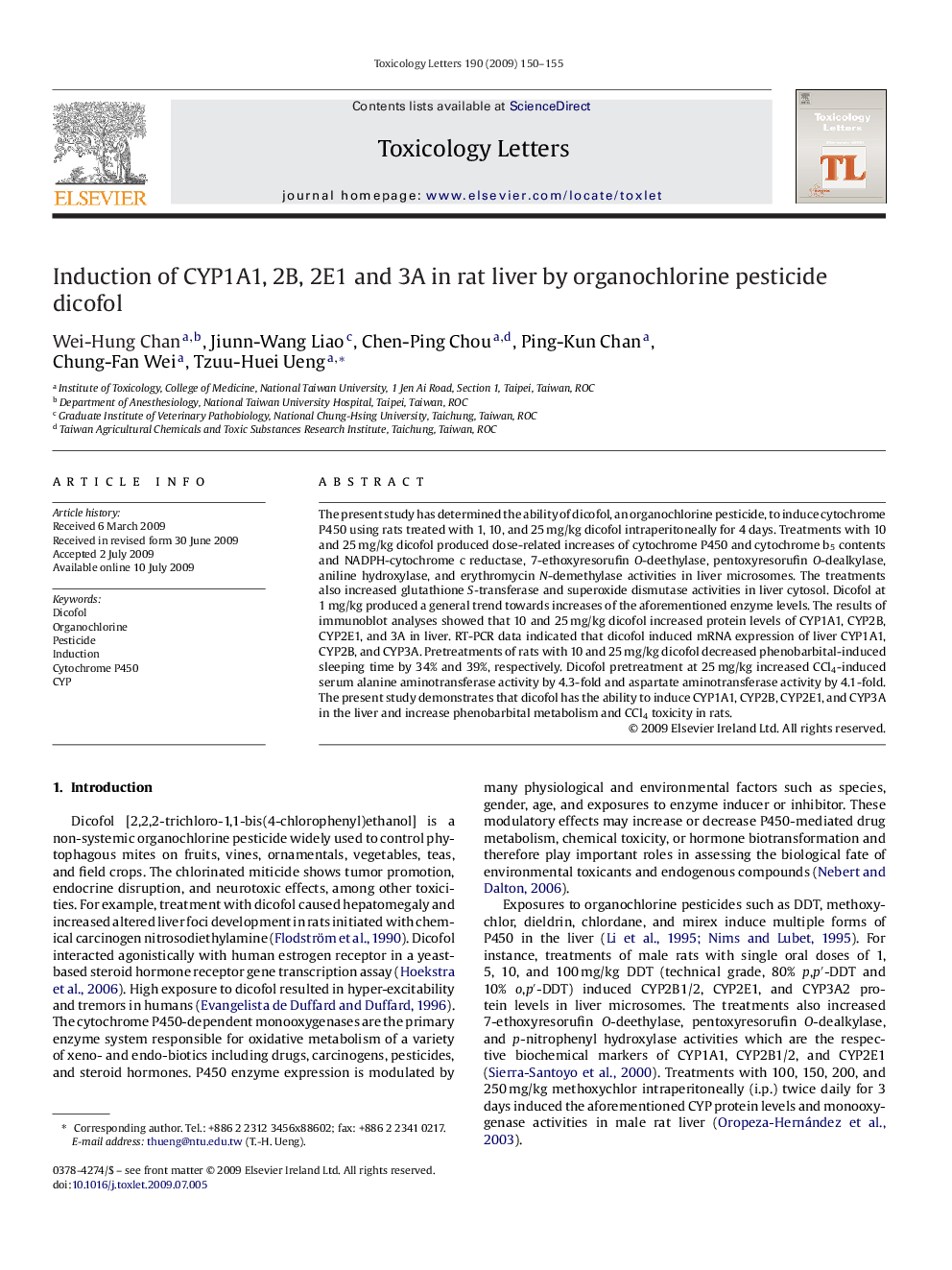| Article ID | Journal | Published Year | Pages | File Type |
|---|---|---|---|---|
| 2601014 | Toxicology Letters | 2009 | 6 Pages |
The present study has determined the ability of dicofol, an organochlorine pesticide, to induce cytochrome P450 using rats treated with 1, 10, and 25 mg/kg dicofol intraperitoneally for 4 days. Treatments with 10 and 25 mg/kg dicofol produced dose-related increases of cytochrome P450 and cytochrome b5 contents and NADPH-cytochrome c reductase, 7-ethoxyresorufin O-deethylase, pentoxyresorufin O-dealkylase, aniline hydroxylase, and erythromycin N-demethylase activities in liver microsomes. The treatments also increased glutathione S-transferase and superoxide dismutase activities in liver cytosol. Dicofol at 1 mg/kg produced a general trend towards increases of the aforementioned enzyme levels. The results of immunoblot analyses showed that 10 and 25 mg/kg dicofol increased protein levels of CYP1A1, CYP2B, CYP2E1, and 3A in liver. RT-PCR data indicated that dicofol induced mRNA expression of liver CYP1A1, CYP2B, and CYP3A. Pretreatments of rats with 10 and 25 mg/kg dicofol decreased phenobarbital-induced sleeping time by 34% and 39%, respectively. Dicofol pretreatment at 25 mg/kg increased CCl4-induced serum alanine aminotransferase activity by 4.3-fold and aspartate aminotransferase activity by 4.1-fold. The present study demonstrates that dicofol has the ability to induce CYP1A1, CYP2B, CYP2E1, and CYP3A in the liver and increase phenobarbital metabolism and CCl4 toxicity in rats.
